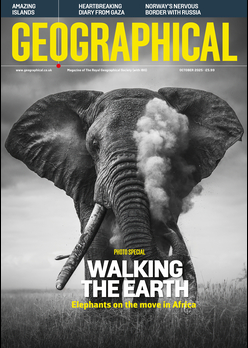


Andrew Brooks argues that long-term development aid was failing those it meant to help. But scrapping it without systemic changes will be disastrous
Eight years ago, I published a book entitled The End of Development: A Global History of Poverty and Prosperity. It came out shortly after Donald Trump began his first term. The book didn’t anticipate his election; rather, it drew together ideas that I had been working on for several years and took a broad historical perspective on the geography of the world economy. The central argument was twofold.
The first part was that the long process of economic development and change that the USA had spearheaded over the past century was coming to an end. Washington’s hegemony was crumbling. The world had become multipolar. The global economy was no longer centred on New York. Beijing, Delhi and other cities were becoming equally important sources of financial capital. Meanwhile, America’s industrial cities, such as Detroit, faced decline and enduring economic crisis.
Enjoying this article? Check out our related reads:
Trump’s pledge to ‘Make America Great Again’ was a flawed attempt to push back against the weight of history. As the market economy expands, it has uneven spatial impacts and produces social crises in particular places, such as the Rust Belt of the Midwest. Politicians who work within the rules of capitalism have few policy levers that they can pull to avert a crisis, and Trump was yanking on all the wrong handles.
As Trump’s first term ended, the International Monetary Fund (IMF) determined that China had overtaken the USA to become the world’s largest economy. This landmark received little attention as it occurred in the shadow of the Covid pandemic. Thereafter, economic crises have embroiled the USA and Europe. Maybe this looks like the long aftermath of the pandemic, but other regions haven’t faced the same enduring crisis. The proximate cause may have been the virus, but the ultimate driver of stagnation has been the evolving geography of the world economy.
The book’s second point was that international development aid – the process through which rich countries have attempted to change the livelihoods of the world’s poorest people – is a flawed political project that should come to an end. Overseas development assistance has failed to lift people out of poverty and resolve the structural inequalities inherent in global capitalism.
President John F Kennedy kick-started international development and founded USAID in 1961: ‘To those people in the huts and villages of half the globe struggling to break the bonds of mass misery, we pledge our best efforts to help them help themselves.’ But this was a lie. Aid has always been governed by strict conditions. Kennedy’s eloquent words shrouded realpolitik. Loans for development became a means to extend American power overseas.
Although sometimes well intentioned, most international development interventions reproduced structural inequalities and locked countries in Africa, Asia, the Caribbean and Latin America into relationships of indebtedness and dependency. Aid directed and controlled by the USA and its allies reinforced a dominant cultural paradigm: that the West’s model of organising society is the right way, and the rest of the world should aspire to be like America.
Free humanitarian aid can help reconstruction in the immediate aftermath of emergencies. Palestinians need financial support to rebuild Gaza. Ukrainians need military assistance to defeat Russia.

But away from such unfolding tragedies, in the more mundane contexts of stable low-income societies, decades of non-emergency assistance haven’t helped people in countries such as Malawi and Zambia. Something radically different to development aid is needed to close the gap between richer and poorer countries – debt relief, preferential market access, unconditional reparations and climate financing could form part of the solution.
As the second Trump presidency gets underway, it looks as if my second argument is being partially borne out in policy. USAID has effectively been put out of business by Elon Musk, ending both international development aid and most humanitarian assistance. In the short term, the immediate consequence for ongoing humanitarian emergencies will be disastrous.
Moreover, the policy isn’t underpinned by any desire to correct the broader economic structures that keep the poor poor. There is no compensatory debt relief or climate financing for low-income countries; rather, it’s part of a strategy to reduce US government expenditure. Alongside increased tariffs on trade and other forms of economic nationalism, this new basket of policies is an attempt to stall the crisis that engulfs America.
In another eight years’ time, we may have reached the end of large-scale international development aid. In tandem, I predict there will be a USA that’s further diminished on the world stage rather than an America that is great again.




